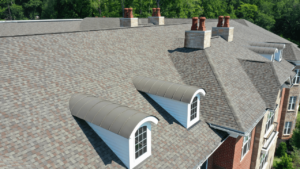Every homeowner knows the importance of having a reliable roof system. From underlayment to decking, every part of the roof is vital to its overall durability. However, gutters could be among the most important ones, especially if you live in an area prone to rain and snow.
Unfortunately, when it comes to gutter installations and maintenance, most people are unsure of what to look for before, during, and after a gutter install to ensure the entire roofing system, including the gutters are serving your house as it should. But you don’t have to worry, as we are here to take a deep dive and provide a complete overview of gutters.
Design
Generally speaking, there are two things you need to consider when designing your own gutter system. For starters, you need to figure out the length of the gutters by measuring the length of the roof along each slope. Just make sure you get the help of a friend to make the process much easier and safer.
Next, you must determine the correct width of the gutters, which can be quite tricky, especially if you are new to this. However, local officials might have already determined the size you need, so make sure you check your local zoning laws.
But if you are out of luck, you must figure out the square footage of your roof by using basic math, while also noting the average rainfall in your area. As a rule of thumb, the more rain you get and the bigger your roof is, the bigger your gutters will need to be. It’s also important to mention that most residential gutter sizes are five inches. Additionally, when it comes to downspouts, you’ll have to place one for every 40 feet of guttering.
Installation
If you plan to install the gutters yourself, you’ll need to start by laying them down in front of your house, right where you’ll be installing them. Then, cut any holes that you might need for downspouts and continue by welding the end caps.
Once that’s done, you can install the gutter-hangers on architectural supports like rafters. Just remember to space them close together to keep the gutters from sagging, as it can lead to stagnant water.
Afterward, you can start hanging the gutters at a slight pitch towards the downspouts. Usually, one to two inches of pitch for every 40 feet should be more than enough. And finally, weld together any corners and attach your downspouts with zip screws or welding. While this may sound somewhat self-explanatory, it’s recommended to trust a professional for gutter installation. There are many pros to hiring a professional for install, but to name a few, backed by a warranty both from the manufacturer and the installer, skilled labor, and peace of mind in knowing you trusted a service as important as gutters to a professional.
Maintenance
When it comes to maintenance, the most important thing you need to do is to inspect your gutters at least once every three months. And, if you don’t have a gutter protection system, you’ll need to clean out any debris that has accumulated. Furthermore, you need to look for any signs of damage and patch the holes that you might come across. That way, you prolong the life of your gutters and prevent any water damage to your home.
Final Thoughts
Overall, understanding how a gutter system works, what to look for when hiring a professional too and maintaining your newfound investment are key factors in playing an active role in homeownership. However, if you are struggling with it, want a second opinion, or have questions, you can always reach out to Tadlock Roofing. Our professional team is always ready to assist you with everything related to roofing, including gutter installation, maintenance, and replacement.
So, why leave it to chance when we are one call away?










